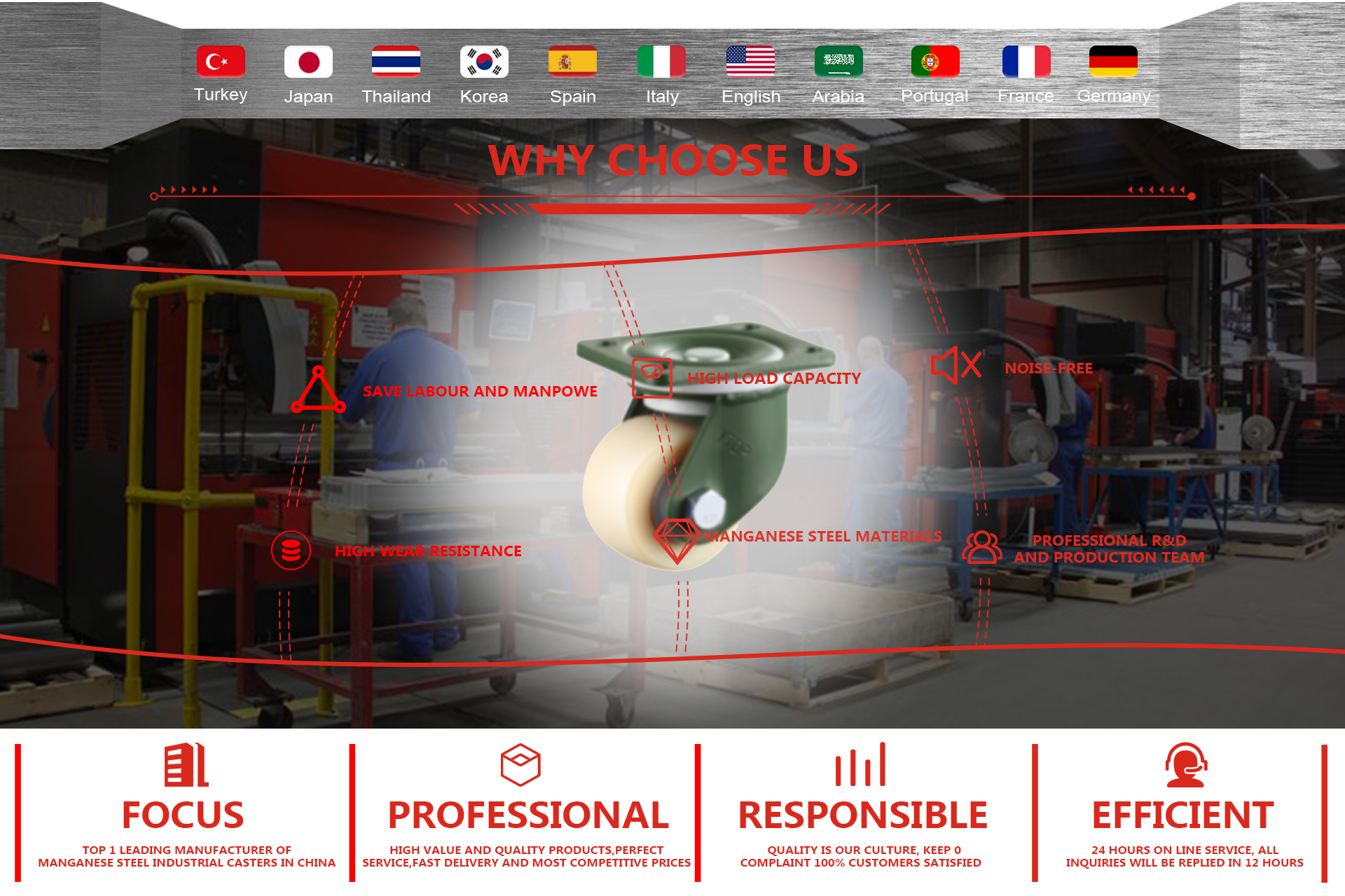Casters are a common accessory in our daily life and work, which can make equipment move easily and improve work efficiency. But do you really understand casters? Today, we will explore the construction and use of casters in depth.
First, the basic composition of casters
Casters are mainly composed of brackets and wheels, the brackets determine the durability and load-bearing capacity of the casters, while the wheels affect the flexibility and smoothness of the movement of the casters. The bracket is usually metal, but there are also plastic, of which the plastic bracket is also known as all-plastic bracket, which is more used in the furniture and medical industry.
Second, directional and universal casters
According to the use demand, casters can be divided into directional casters and universal casters. Directional casters can only move in a straight line, while universal casters can be turned 360 degrees, moving in any direction.
Third, the installation height, rotation radius and steering
The installation height of the caster refers to the vertical distance from the ground to the installation position of the equipment, which affects the stability and safety of the equipment. Turning radius refers to the vertical line of the center rivet to the tire outer edge of the horizontal distance, a reasonable turning radius can extend the service life of the caster. Steering is hard, narrow wheels are easier to realize than soft, wide wheels.
Fourth, traveling flexibility
There are many factors that affect the traveling flexibility of casters, including the structure of the bracket, the choice of steel, and the size and type of wheel. On the smooth ground, large wheels, hard wheels have more advantages; while on the uneven ground, soft wheels are more labor-saving, and can better protect the equipment and shock absorption.
V. Driving load and shock load
Post time: Jul-29-2024



